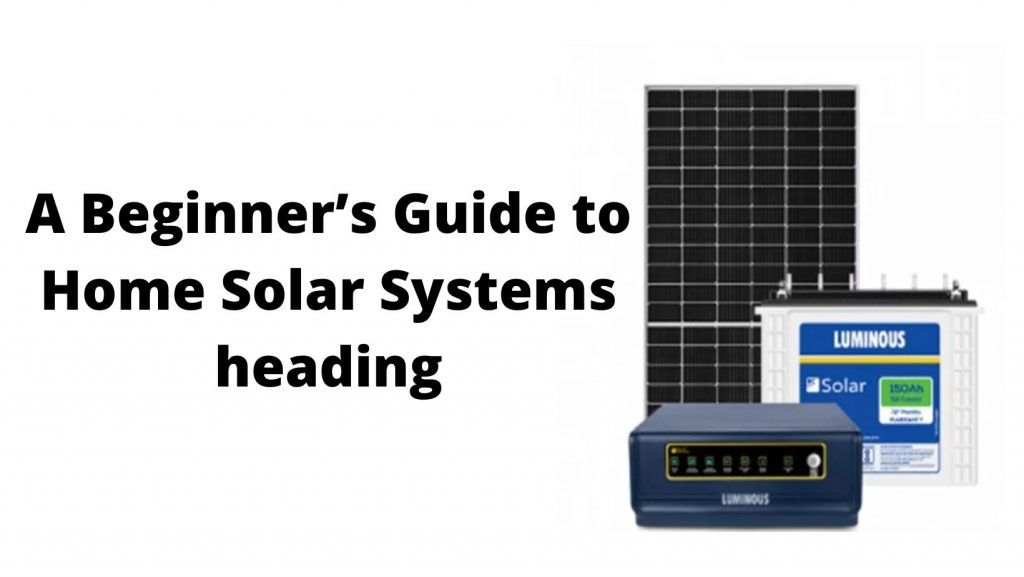As people are becoming aware of the many benefits of switching to solar power, there has been a considerable rise in home solar system installations across India. But understanding how a solar PV system works can often be tricky, especially if you’re new to the concept – which is why we’re here to help. This beginner’s guide will explain everything there is to know about home solar systems, making your switch to clean energy easier and smoother. Let’s get started!
The Basics of a Home Solar System
A home solar system is a clean energy setup that generates electricity by harnessing sunlight. It has the following 4 main components:
- Solar PV panels that absorb sunlight and convert it into power (in the form of Direct Current) by creating an electric field.
- A solar inverter that converts the Direct Current (DC) into Alternating Current (AC) so you run appliances without any hindrance.
- A mounting structure that holds the PV panels in place, enabling them to produce electricity.
- Cables and connectors (also known as balance of systems) that complete the entire setup.
While these are the 4 primary elements of a home solar system, some setups like off-grid PV plants also include a solar battery and a solar charge controller. In this case, electricity is stored in the solar battery bank as backup during nighttime or power outages, but more on that later.
Now that we know the basic functioning of a home solar system, let’s look at its types.
Types of Home Solar Systems
Home solar systems come in three different types, which are:
- On-Grid Home Solar Systems
On-grid (also called grid-tie & grid-connected systems) home solar systems are best suited for residential areas. While solar energy is the primary power source, this type of plant operates by staying connected to the local electricity grid for backup, meaning it comes without a battery.
By installing an on-grid solar plant you can increase your monthly savings by selling excess power to the public grid through net metering. Plus, when solar power is not available, you can always rely on the grid, making this type of home solar system a worthy investment.
- Off-Grid Home Solar Systems
Off-grid home solar systems are typically installed in areas that experience frequent outages or don’t have easy access to the public grid. This is because off-grid systems are independent setups that solely rely on solar energy and are not connected to the local grid.
Better yet, the surplus electricity generated by the PV modules is stored in the solar battery for backup. As a result, you can completely eliminate monthly power bills as you will be able to attain energy independence in the long run.
- Hybrid Home Solar Systems
A hybrid home solar system is a combination of both on-grid and off-grid PV systems. This is because while the solar power plant has a connection to the main grid, it also has a solar battery for storage. Thus, not only can you produce solar energy, but you can also save it for backup.
All in all, hybrid home solar systems are a great investment; however, they are still gaining traction among the Indian population. Additionally, these solar plants are also slightly more expensive compared to grid-connected and off-grid PV systems, owing to their high efficiency and impeccable performance.
So, that concludes everything beginners should know about home solar systems. But if you’re on the lookout for solar solution providers in India, you must check out Luminous’ website. Luminous offers a comprehensive range of home solar systems at affordable prices and you can also opt for installation and related services, making them your ideal choice for all things solar. Explore their website today!




